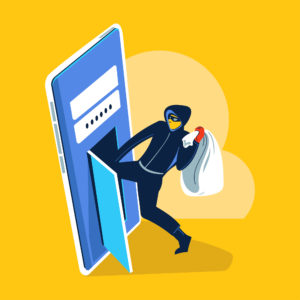Special to the Findependence Hub
Non-fungible tokens (NFTs) stepped into the limelight in 2021. As more people began putting their money into them, NFTs became part of our everyday vocabulary. NFT investments gained worldwide popularity to reach a market value of over US$40 billion. But like most financial assets, this new cryptographic asset also presents lucrative opportunities for scammers.
In this article, we’ll dive into the five most common NFT scams and how you can avoid NFT fraud.
1. Phishing scams
You need to sign up for a digital wallet to transact on the Ethereum blockchain. The most popular Ethereum wallet for NFT collectors is MetaMask, which was recently targeted in a phishing scam. The NFT scam involves fake advertisements asking users for their wallet keys or their security seed phrases. These fake pop-ups operate on social channels such as Telegram, Discord, and other forums redirecting users to a landing page that looks like MetaMask or other popular websites. A successful phishing attempt can wipe out all the cryptocurrency in your digital wallet.
How to avoid
- Write your seed phrase down on paper. Don’t store a photo of it on your phone, and never give it to anyone.
- Always visit the verified website directly for all your crypto transactions – not through links, pop-ups, or emails.
- Never enter information into the MetaMask pop-up or any other pop-ups.
2. Pump and Dump NFT scams
Pump-and-dump schemes arise when a group of people buys a bunch of NFTs or currency to drive their demand up artificially. After successfully raising its worth, these experienced scammers cash out by selling their NFTs to the highest bidder.
How to avoid
- Monitor, track or follow the project on Twitter and join its Discord channel to see if it has a good number of engaged collectors and investors.
- Review the wallet records and transaction history of the desired NFT. If there are several transactions around one date, it can be a red flag.
3. Catfishing
Since NFTs are virtual investments, their marketing happens on social media, making them vulnerable to catfishing. Moreover, popular NFT communities hire social media influencers and celebrities to promote NFTs; this makes it difficult to tell the real NFTs from the fake ones.
How to avoid
- Don’t click links given in the DMs (‘direct messages’ section of various social media platforms).
- Don’t respond or give out any information to a direct message from someone claiming to be a celebrity, founder, or influencer.
4. Bidding scams
Bidding scams generally take place when you are trying to sell your NFT. Once the bidder puts in their highest bid, they may switch the currency during the transaction without your knowledge. For example, instead of receiving 10 ETH (around $25000), you could receive $10.
How to avoid
- Never accept a bid lower than what you want.
- Double-check the currency used for the transaction.
5. Fake giveaways
NFT giveaway campaigns, also known as airdrop scams, promise a free NFT if you sign up on their website and spread their message. Once they have the link to your cryptocurrency wallet credentials you give them to receive the free giveaway, they record the information you type and use it to access your account and steal your library of NFTs.
How to avoid
- Verify the account’s social media page.
- Ensure the link sent to you matches the company’s URL.
6. Plagiarized or counterfeit NFTs
Anybody can take a photo or make a copy of an artist’s work and sell the fake artwork on OpenSea or other NFT marketplaces without owning the rights to that intellectual property (IP). If you buy this counterfeit, you are essentially buying valueless art with no way of getting your money back.
How to avoid
- Look for the blue checkmark next to the artist’s profile picture on NFT marketplaces, such as OpenSea.
- If there is no blue check on the artist’s profile, check their Twitter and other social media channels. Ask them if the artwork they are selling is theirs.
- Do your research to ensure the artwork you are interested in buying is from a verified account.
- Learn to identify counterfeit blue checks. In a true verified account, the blue check is on the border of the profile image.
- Check if the artist has a Discord channel and inquire about them in the community.
Now that you understand NFT scams better, it will help you purchase and trade NFTs safely while identifying the signs of a potential NFT fraud.
Akanksha Malik is a content creator & digital strategist at Mesha – India’s largest investing club & online community where the world’s best investors gather to share ideas, discover fellow investors, invest in NFTs & crypto, and compete in challenges for real money. She develops content to share her knowledge and insights helping her readers stay updated with the latest in fintech & investments, as well as cryptocurrency trends and upcoming NFT opportunities. Apart from being passionate about her work, Akanksha loves exploring architectural sites and different local dishes during her travels.


